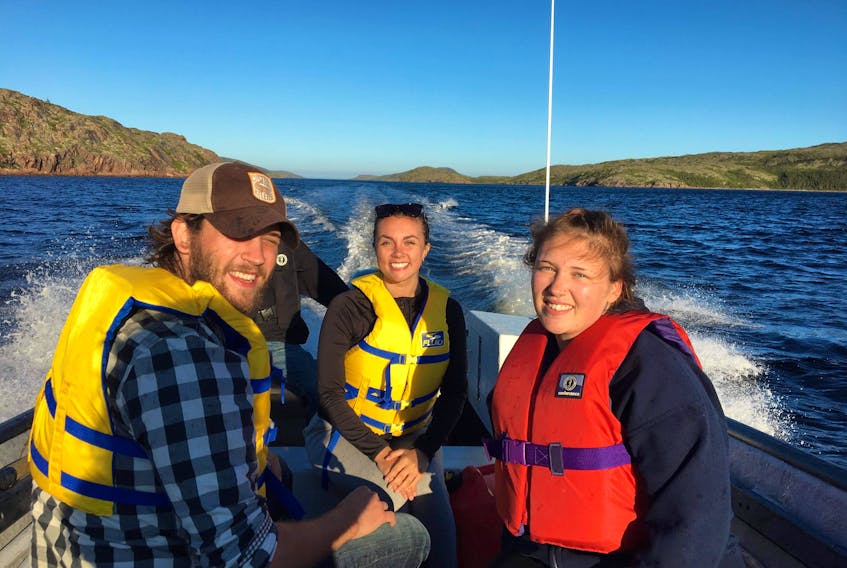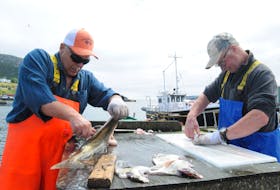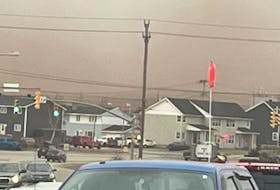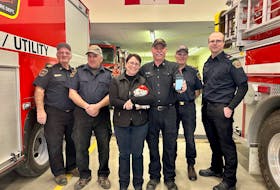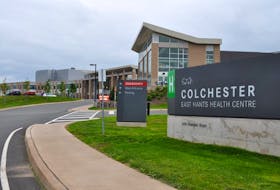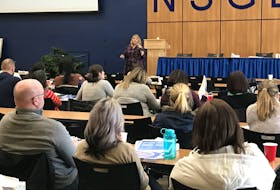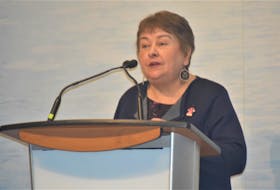ST. LEWIS, N.L.
NEWFOUNDLAND AND LABRADOR
CANADA
Halfway through data collection on a project to improve energy security for three southern Labrador communities, researchers say it is going better than they expected.
Abigail Poole, one of three research assistants hired locally for the project, said the success is at least partially attributable to the involvement of community members on the team currently conducting surveys in Black Tickle, St. Lewis and Norman’s Bay.
“My involvement with this project is super important because I’m already very close to my community members, so gathering people for surveys or talking them through what the project is about is just a chat to have with them really, so it’s a simple conversation,” she said.
The research assistants, Poole and Siobhan Slade from St. Lewis and Stacey Roberts from Black Tickle, were made possible by funding from Conservation Corps Newfoundland and Labrador, a non-profit with the stated mission of “providing youth with training and employment in environmental and cultural heritage.”

Nicholas Mercer, a PhD candidate from the University of Waterloo’s Institute for Sustainable Energy (WISE), who was engaged by the NunatuKavut Community Council to head up the research, said the uptake so far has been very high. In Black Tickle they conducted 33 interviews representing 65 per cent of the households and in St. Lewis 31 interviews representing 40 per cent of households.
“The communities have been very engaged, really helpful and highly supportive of our project so far,” Mercer said.
Although unable to provide specific details because the data is preliminary, Mercer said two overall trends have emerged.
In Black Tickle, he said, the biggest concern is the secure availability of fuel.
“As most people know, Black Tickle is a tundra island, so there is no locally available fuel source, community members have to go upwards of 40 kilometres each way to collect firewood,” he said. “Because of that a lot of the community is dependent on oil furnaces and two years ago the local fuel supplier left the community, which created some extreme energy security challenges.”
Furthermore, with Black Tickle’s source of electricity being a diesel generator, electric home heating is untenable for most people because of the cost.
“So, as of right now, the three forms of heat — wood, oil and electric heat all have significant challenges,” Mercer said. “Part of the work that we’re doing is we’re looking at novel and innovative ways to help community members heat their homes.”
St. Lewis, on the other hand, has a ready supply of firewood.
“I would even go so far to say firewood harvesting is an integral and important part of culture and tradition in the community,” Mercer said.
The trend that has emerged there has to do with what he calls a “procedural justice issue.”
“Over the last few years, electricity rates have been rising in the community and electricity rates are anticipated to continue to grow as a result of the Lower Churchill Project,” he said. “There’s certainly some angst in the community because they’re paying for Muskrat Falls via increases in their electricity bills, but they’re not necessarily benefiting from the project.
“In fact, the high voltage transmission lines from Muskrat to the island is bypassing many of these coastal communities and they’ll never see a kilowatt of electricity from that project.”
Part of the impetus behind the NunatuKavut initiative, which is partially funded by a $25,000 grant from the Social Sciences and Humanities Research Council of Canada, is reducing reliance on diesel generation for both economic and environmental reasons, but it is not a simple equation.
“The thing about the diesel power is it does provide jobs for people in the communities,” said Slade, who is a heavy diesel mechanic in St. Lewis. “I think that pairing diesel with perhaps another renewable energy source would probably be a way to go potentially in our future.”
However, she said, the critical thing is that whatever the solution might be, it is not externally-imposed.
“I would be open to taking training and education, in order to perhaps maintain wind turbines or tidal turbines or whatever way they go,” she said. “I think education and training in communities would be essential and making sure the communities are part of the decision that’s made.”
Last week, the group took a break from their activities in southern Labrador to travel to New Brunswick for a Shared Future conference. Shared Future is a five-year research project funded by the Canadian Institutes for Health Research. Shared Future team members are numerous academic, Indigenous, government, community and industry organization representatives from across Canada and around the world including Emily Beacock, an environmental studies Master’s student at Dalhousie University, who is working alongside the group in southern Labrador and looking at the research from a slightly different perspective from Mercer.
“He’s doing community energy planning, understanding community perspectives, and I am taking that, I’m going a little bit further looking for community perspectives on health and well-being both of the population of the community and of the land, the water, the air, the ice and how renewable development and sustainability development in these communities can be done in a way that respects how the communities feel about their own health and the environment around them,” she said.
The team is back in St. Lewis this week before moving on to Norman’s Bay.

